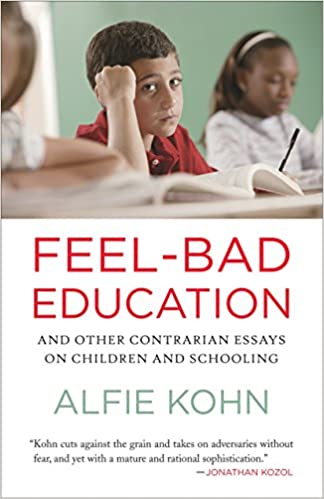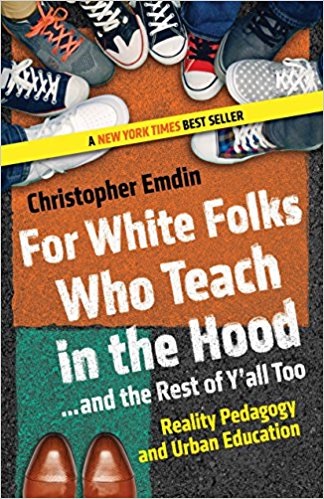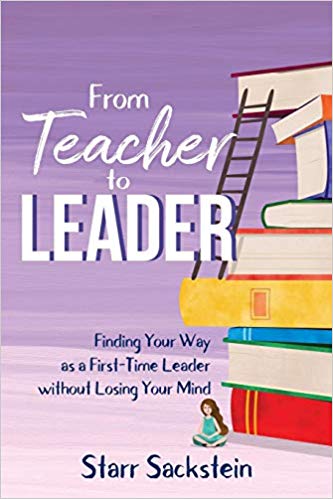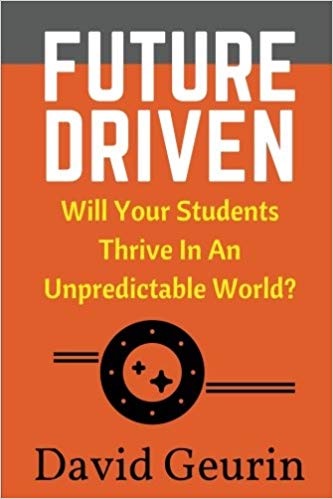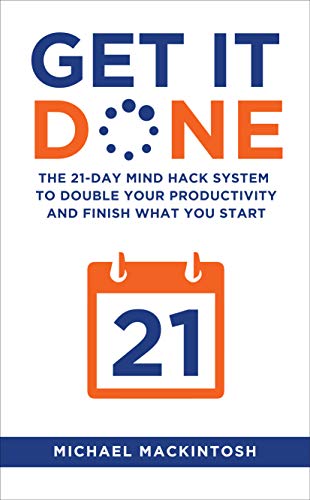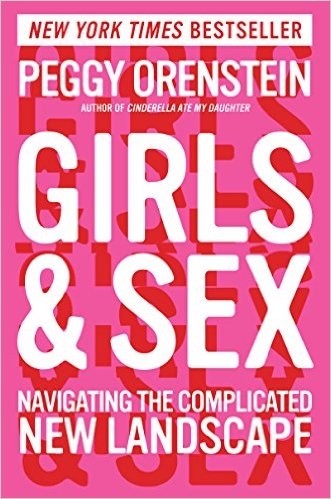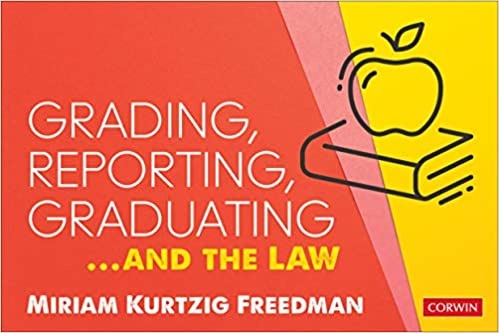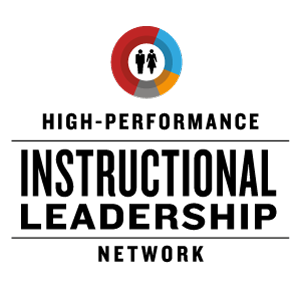Archive for the ‘Leadership Books’ Category
Wednesday, July 13th, 2011
Feel-Bad Education: And Other Contrarian Essays on Children and Schooling by Alfie Kohn (Beacon Press: Boston, MY ©2011) is his twelfth book where he argues that our schools are in the grip of a “cult of rigor” where harder is confused with better. Joy and meaningful learning are at risk. In nineteen recently published well-researched essays, Kohn invites us to think beyond conventional wisdom. He questions much of what schools reflexively do and makes the reader understand why many current reform efforts are misguided. If you believe that NCLB and Race to the Top efforts make sense, you need to read this book. It will give parents and educators alike a fresh perspective they can use to shake the system for the better. Click the button below to purchase from Amazon.
”Well, Duh”: Obvious Truths We Shouldn’t Ignore
- If we agree on something, why do schools function in a contrary manner? Kohn gives us more than a dozen. If you have more, let him know. 1) We require students to memorize material they soon forget. You are more likely to retain the knowledge you acquire pursuing a project than preparing for a test. Professional development also often involves the worst passive practices. 2) Knowing facts doesn’t make you smart and fact-oriented learning may interfere with your becoming smart. 3) If kids have different abilities, why to we teach them all the same? Lock-step curriculum and uniformity are valued by many leaders. 4) Students are more likely to learn if they are interested. Education isn’t like bad-tasting medicine. If we were turned off by an educational approach, perhaps we shouldn’t use it. 5) Students are more likely to be interested if they have some say.
More Duhs
- 6) Just because something raises test scores doesn’t mean it should be done. Also, the more time you spend preparing for a test, the less meaningful the results will be. 7) Students are more likely to succeed if they feel known and cared about. They also need to be healthy and well-feed. 8) We want children to develop in many ways, not just academically. 9) Harder work isn’t necessarily better. It is likely to be frustrating. Pressure will also cause students to seek easier tasks. 10) Kids aren’t short adults. We have seen an increase of developmentally inappropriate instruction with more sit-still-and-listen for younger children. 11) Policies that benefit large corporations aren’t necessarily good for children. 12) It’s substance not labels that matter. If your PLC focuses on cramming for tests, what good is it?
Progressive Education: Hard to Beat-Hard to Find
- While progressive education has many definitions, Kohn notes that it usually features hands-on learning, multiage classrooms, mentor-apprentice relationships, attention to the whole child, learning in a caring community, and an organization that features problems and projects rather than lists of facts and separate disciplines. Learning is active and the flexible curriculum considers the children’s interests. Kohn sites research that shows progressive education as more productive and efficient. Unfortunately, progressive education is also rare. It is harder to do and more demanding on the teachers. Teachers must give up total control and be comfortable with uncertainty. The pressure of NCLB testing is also a barrier even though there is no evidence that it works.
Challenging Students to Challenge
- In this chapter Kohn touts the idea of teaching by doing and encouraging students to critically challenge ideas they encounter. Teachers should let students watch them write so they can see the process in action. Critical thinking helps students spot fallacies and develop a set of analytical thinking skills. Teachers, however, are more likely to focus on compliant behavior rather than raising rebels who can disagree as long at they have rational. How many kids would need treatment if excessive compliance was considered a disorder? Students need to also challenge their own beliefs so they can reorganize their thinking in light of new evidence. This is Constructivism 101. Making students feel comfortable challenging the status quo requires the right classroom culture. Unfortunately, many professors who espouse this approach use traditional teaching methods themselves.
Tags: Alfie Kohn, Feel-Bad Education
Posted in Book Summaries, Education Books, Leadership Books | Comments Off on Feel-Bad Education: And Other Contrarian Essays on Children and Schooling by Alfie Kohn
Wednesday, December 28th, 2011
Finnish Lessons: What Can the World Learn from Educational Change in Finland by Pasi Sahlberg (© 2010, Teachers College Press: New York, NY) is the story of Finland’s extraordinary reforms and one that should inform policymakers and educators around the world, most of whom are on the wrong track. Sahlberg has lived and studied these reforms for decades and is a clever and engaging story teller. Click below to purchase this book today, and share with your colleagues.
Pasi Sahlberg, PhD
- Pasi is Director General of the Center for International Mobility and Cooperation at the Finnish Ministry of Education and Culture (CIMO) and a member of the board of directors of the Association for Supervision and Curriculum Development (ASCD). For the last two decades has analyzed education reforms and worked with education leaders around the world. He trains teachers and leaders as an adjunct professor at the University of Helsinki and the University of Oulu in Finland.
Forward by Andy Hargreaves
- Over the last 25 years the performance of American schools has steadily declined relative to international benchmarks. Meanwhile, reformers keep doing the same things. Force, pressure, shame, top-down intervention, competition, standardization, tests of dubious validity, easier passage into teaching, closure of failing schools, firing teachers and principals, and fresh starts with young teachers in new schools. Given this, there is no reason to expect Obama’s Race to the Top to succeed.
- Hargreaves warns us not to dismiss Finland’s success by using the excuse that we aren’t like Finland. He notes that in addition to being the leading authority on Finnish education, Sahlberg is also a world-ranking scholar with a world view developed by working at the World Bank and schools from many countries. It might be hard for some Americans to admit that someone else does education better, but they would all be wise to seriously consider the possibility.
Tags: Education in Finnland, Finnish Lessons, Pasi Sahlberg
Posted in Book Summaries, Education Books, Leadership Books | Comments Off on Finnish Lessons – What We Can Learn
Monday, October 19th, 2015
Fixing Special Education: 12 Steps to Transform a Broken System by Miriam Kurtzig Freedman ©2009 should be included in all teacher preparation programs and placed in the hands of policy makers who can address Miriam’s 12 transformative steps. It can also serve as an excellent resource for parents. Be sure to click at the bottom of any page to get copies. Also see my Ed Week post Why Does Special Education Have to be Special?
Miriam Kurtzig Freedman
- Miriam is an attorney and former teacher who works with people who want better schools. As an immigrant to America at elementary-school-age, she was empowered by public schools and works to help educators teach all children. She works for the Boston firm of Stoneman, Chandler, & Miller where she gives lively and practical presentations, training, and consultations. She co-founded Special Education Day, authored eight books, has written for many national publications.
Summary
- Miriam starts with a mention of the 1975 Individual’s with Disabilities Education Act (IDEA) and how it forced schools to offer appropriate education for all students with disabilities (SWD). As a result, all students with disabilities have access to education. She also notes that it has spawned a system that is too often focused on legal procedures rather than educational outcomes. It has become dysfunctional, producing a huge bureaucracy and warring stakeholders. The amount of litigation and fear of litigation is huge, which points to a system that is clearly broken. This book will not only help you understand this field better, it will also suggest 12 necessary steps for systemic reform. They aren’t all easy, but they are necessary. The key vision is to free schools from the bureaucratic stranglehold and fear of litigation so that we can get back to focusing on teaching and learning.
The Good News
- Miriam highlights the idea that thanks to IDEA, schools can no longer turn students away just because they have high needs. We now have an inclusive approach and believe that all children can learn. Now nearly 14% of students in the US receive special education services. About 90% of the children served are not considered severely disabled, and it is this group that is the focus of this book.
- The rates of growth in the cost and the number of SWD have outgrown the rates for regular education. The process of identification and the creation of individual education plans (IEPs) is slow and expensive and has become ever more complex and out of sync with reality. Since these services are required by law, they are paid for first and what’s left is used for everything else. As special education has expanded, so have unintended consequences as we deal with excesses of the civil rights movement. Even President Ford realized at the time of the law’s passing that it was promising more than it could deliver, and promised a ton of administrative paperwork. Now Miriam urges us to fix the system.
Posted in Book Summaries, Education Books, Leadership Books | Comments Off on Fixing Special Education: 12 Steps to Transform a Broken System by Miriam Kurtzig Freedman
Monday, September 21st, 2020
This is my most read book summary and I think it is timely for our current environment. Enjoy and be sure to get the book.
For White Folks Who Teach in the Hood…and the Rest of Y’all Too by Christopher Emdin explains how teachers from different cultures can connect and foster success when teaching black students in poor urban schools. While aimed at black cultures found in the inner city, the advice here applies to anyone teaching students from a cultural background that is not their own. In addition to the targeted audience, I strongly recommend this book to all teachers and their administrative leaders. Leaders of teacher preparation programs should also seriously consider this book.
Introduction
- Chris compares the urban poor black students to indigenous people like native Americans, who have suffered from the impact of colonization. He invented the term neoindigenous to describe his target population. The key idea in the book is how do we help white teachers better understand the culture of the black students they teach rather than spending their time trying to take their culture away from them. Strong discipline seems oppressive to many students and gives them the feeling that school is not for them. Harsh treatment is unlikely to produce academic success.
- The behavior students bring can make white teachers uncomfortable unless they are prepared for what they will face. They should become familiar with student culture including clothing, music, and speech. Viewing hip-hop as vulgar, for example, is a good way to make sure a teacher fails to connect. Students see a curriculum that is not connected to their culture and school rules that seek to erase that culture.
1. Camaraderie: Reality and the Neoindigenous
- Teachers in urban schools are usually from different neighborhoods and classes and don’t look much like their students. Unfortunately, they don’t see this as an impediment when it comes to engaging students. They can come in to save the students, which can make student experiences, emotions, and communities invisible. Teachers need to visit the community where students live and leaders need to facilitate visits. These students are often traumatized so it’s vital to get an idea of the nature of the traumas they face.
- Teachers can’t expect students to leave their experiences and emotions at the door. Even poverty comes with complexity. While you don’t have to use student vocabulary, it is important to know it. Teachers need to see students as individuals and meet them on their own cultural and emotional turf.
2. Courage: Teach Without Fear
- Watch out for code words like “these kids” and “those kids.” Black youth see white teachers as enforcing rules that are unrelated to teaching and learning. They often respond negatively to structures that teachers value at the expense of their academic success. Chris tells of his days as a student and rookie teacher when he was urged to take emotion from learning and teaching. This mantra served to mask fears.
- Too often white teachers become test-prep machines. Even teachers with good stories are apt not to tell them for fear of getting too personal. They also may avoid hands-on activities for fear of what students might do. Even Chris had an initial fear of students, which kept him from moving beyond fear and getting to know them.
Posted in Book Summaries, Education Books, Leadership Books | Comments Off on For White Folks Who Teach in the Hood…and the Rest of Y’all Too by Christopher Emdin
Monday, February 11th, 2019
From Teacher to Leader: Finding Your Way as a First-Time Leader—Without Losing Your Mind by Starr Sackstein recounts her first year as an administrator. This story of a remarkably gifted teacher’s journey into administration after her first year is a great read. Starr’s reflections, research efforts, and writing skills have resulted in a valuable resource for teachers considering a jump to administration and experienced administrators alike. She lives up to her desire of becoming the kind of leader she would want to have. As an educator since 1969 and an administrator for 30 years, I find her advice to be spot on. Make sure that you and your professional development library has a copy.
Forward
- The forward by Dan Rehman, Superintendent West Hempstead Union Free School District tells the story of how Starr was hired as the district’s director of Humanities. While she clearly had the necessary qualities, she lacked the necessary certification, which Starr and the district were finally able to work around. Dan paints her as enthusiastic, goal focused, persistent, self-aware, creative, innovative, willing to take risks, and reflective. What else could you ask for in a leader?
- While she loved her nine years teaching journalism in New York City, (16 years total) she struggled with boredom and dissatisfaction with administrative decisions, and began experimenting with grading less and helping students began a flurry of reflection and problem-solving. She questioned what learning should look like. She became an administrator to become a mentor for new teachers. This book tells the story of her first year, mistakes and all.
- Each chapter also ends with some valuable Daily Reflections for Change that you can do.
1. To Leave or Not to Leave
- As a teacher, there is no single right way to know when to leave. Possible reasons are boredom or complacency with your work, urge to share your expertise with others, or someone suggesting that you make the move. (Doug: They also make more money.) Once you start to think about it the more you need to look for administrative programs. Ideally, you find one where you can take a few courses as a non-matriculated student to get your feet wet. Interview working administrators to get a better idea of what the job entails. Read some of the books Starr suggests and look for Twitter chats on leadership.
- Thirteen years into teaching Starr was able to take on a “hybrid” role as part teacher and part teacher coach. She felt that still doing some teaching gave her more credibility with the people she coached as she was still doing the things that she was trying to get them to do. Teachers could visit her classroom and she could still continue to try new things.
- Before you start looking for jobs create a description for your ideal job. Starr provides one here based on her desires and skills. Once you have your goals spelled out you can better articulate them in interviews. While no two people take the same path to administration, Starr’s path covers the basics that all teachers need to consider. She suggests that you are not there to fix teachers but to help them further develop the skills they already possess. Stay humble, be present, listen, collaborate, and be patient.
2. Teacher Leadership as a Precursor to School Leadership
- Consider the job description and ask a lot of questions about the school culture and needs to make sure the job is a good fit. Before transitioning grow your content or pedagogical expertise and serve on committees. Apply to present at local, regional, or national conferences on topics important to you. Adult learners are different from students. How so? Nothing is worse than discounting ideas elicited from others. It’s a surefire way to make your team resent you.
3. The Ache of the Shift
- Starr became very aware of the void that had been created inside by not being in the classroom. She worked to rebrand her decision as an extension of her teaching career and not as a replacement for it. She spends time in classrooms. Plans with teachers and offers to co-teach when it is appropriate. As a new team leader, you will definitely experience isolation. For the most part, it will continue because you are no longer part of us. Now you are one of them. Leadership doesn’t have to be the dark side. It can be light, optimistic, and supportive, but it definitely takes time to get your team to believe you are one of them. To get feedback Starr uses anonymous Google forms. Be ready with “Plan B” in the event your day changes unexpectedly. Starr also offers advice on attire here. Learning—in the classroom and in life—happens moments forced her to figure things out. You are going to have to do a lot of learning so it helps if you enjoy learning. Exhibit the behaviors you’d like to see.
Posted in Book Summaries, Education Books, Leadership Books | Comments Off on From Teacher to Leader: Finding Your Way as a First-Time Leader—Without Losing Your Mind by Starr Sackstein
Friday, April 26th, 2024
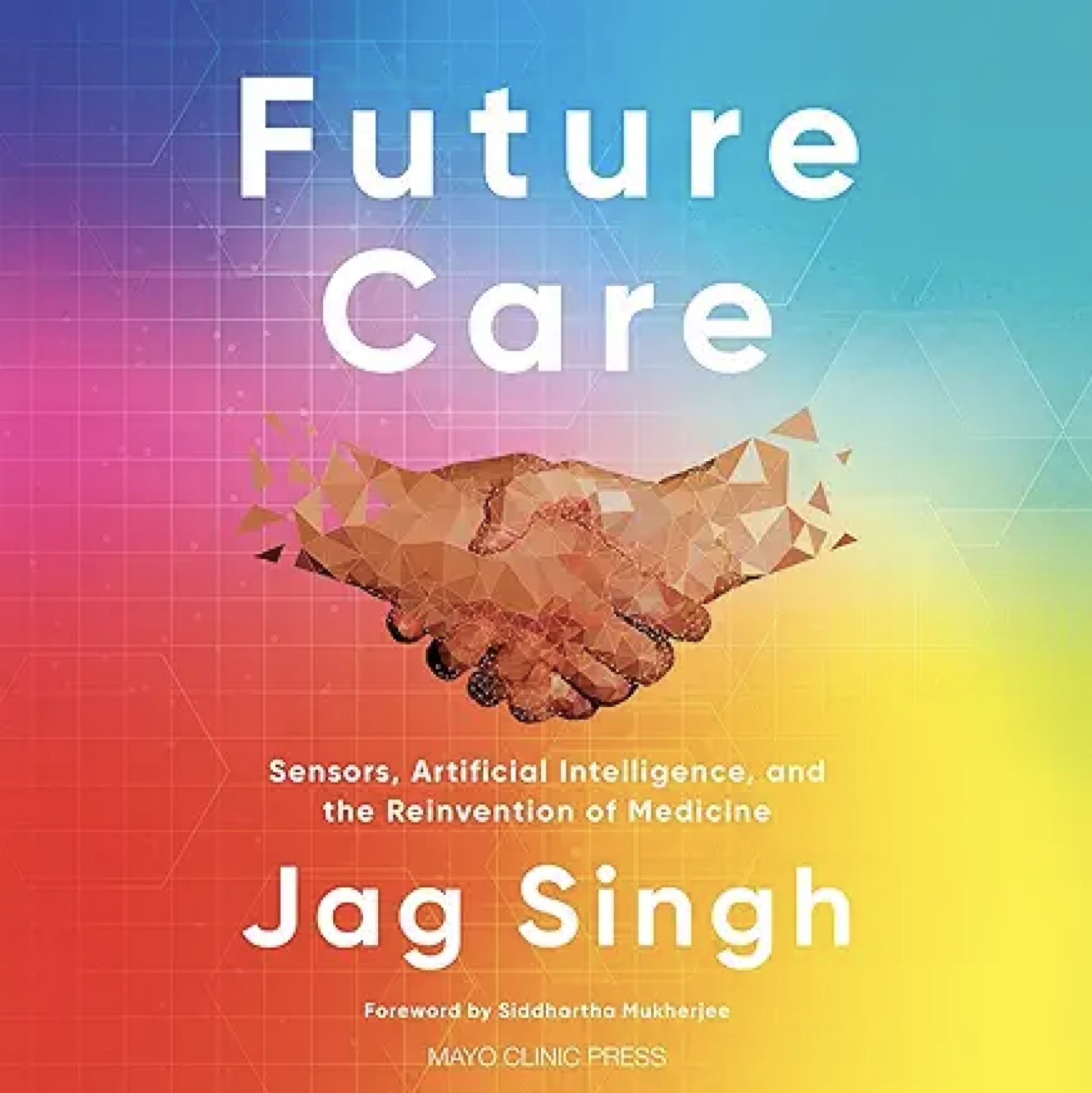
Future Care: Sensors, Artificial Intelligence, and the Reinvention of Medicine by Jag Singh takes a look at the current status of sensors and electronic medical records and shows us the future of health care where the focus is on staying healthy rather than treating disease. There are some barriers to a future that features continuous monitoring and treatment of our entire body by unobtrusive wearables and Jag lets us know what they are. If you have a body that you want to keep healthy, this book is for you.
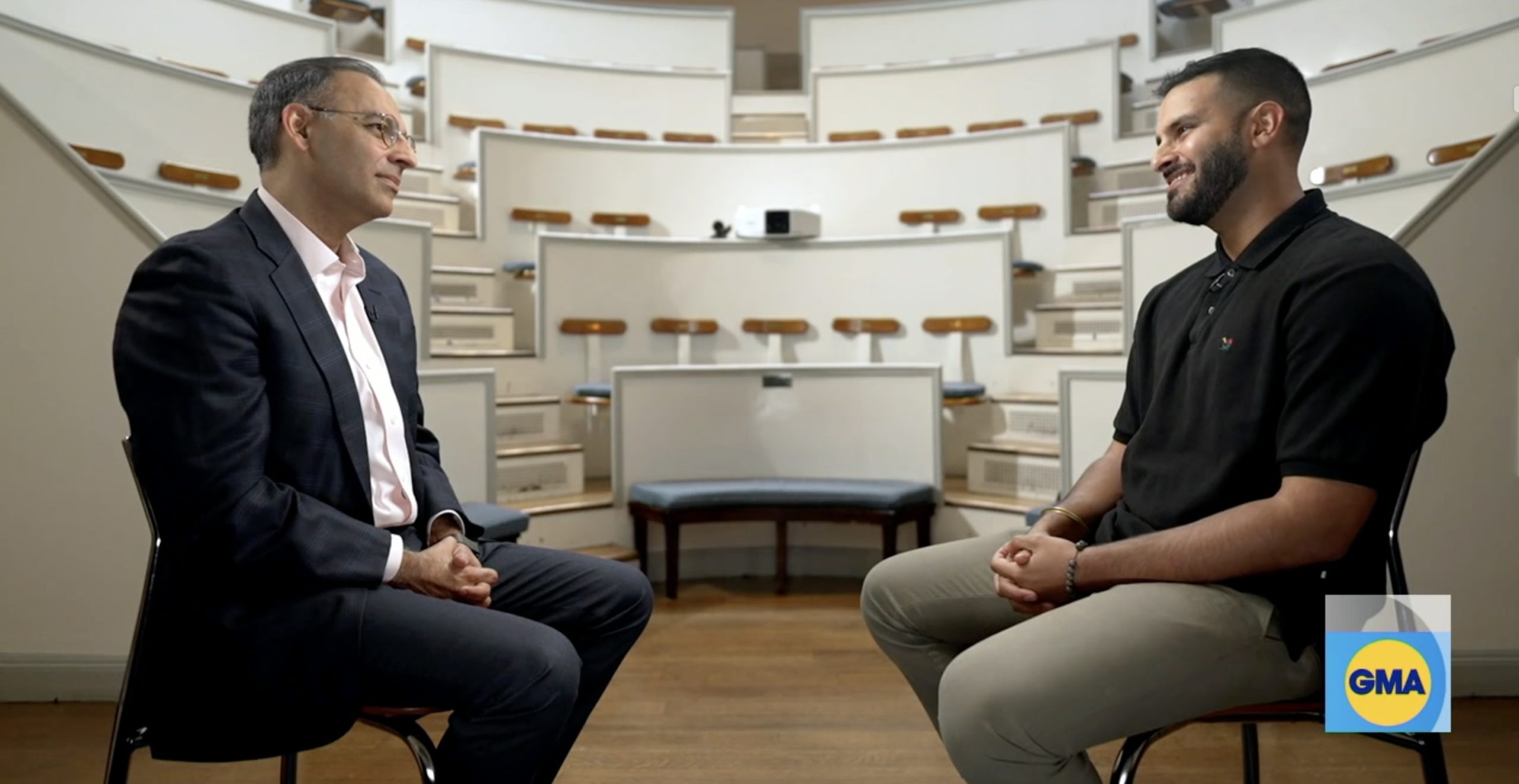
You can start with his interview by his son on Good Morning America. The future of medicine and health care in a post-pandemic world
Introduction
- Jag tells of his experience being hospitalized with a serious case of COVID-19. Here he saw first hand the trend toward more virtual care even in the hospital and more so once he was sent home. The future of health care is virtual. It was already on the way, but the pandemic jump started the trend. There is more focus on wellness and prevention as well with a shift in hospital care to the home.
- Compared to other developed countries, healthcare in the US features lower quality and less cost-effective care. Cost for drugs, devices, and procedures are mush higher and people are less satisfied. At $4 trillion a year, health care accounts for one fifth the US GDP. The conversation is around data, wearables, sensors, and AI. As the number of older people grows we are looking at a tsunami of sicker and older patients.
Part I: Sensors
1. Making Sense of Sensors
- Our body has sensors for every sense and virtually every cell. We also have many digital sensors that can be worn or implanted. The goal is to use such sensors to self-monitor and self-correct our bodies from disease states and to avoid invasive procedures provided by surgeons. As sensors advance, they can provide continuous information and take action as needed. This is important as necessary medical interventions do not line up with trips to the doctor.
2. Doc-In-The-Box
- Modern smartphones have joined a host of wearable sensors that continuously gather data and transmit it for analysis and informing the owner. They already make for excellent heart monitors. The competition in this market is pushing innovation at a rapid pace.
- While implants are part of this market, the developmental emphasis is on non-invasive devices. These devices don’t lie, unlike patients, and are far superior to patient memory. Other key issues are the integration of these devices into the larger health care picture and the affordability that can take them beyond the well off early adopters.
3. The Failing Heart, The Dying Patient
- Heart failure affects more than 6.5 million Americans at a cost of $40 billion a year and growing. Many only see a doctor after they go to the emergency room due to a significant cardiac event and most never bounce back to where they were before the event. Virtual sensor care offers hope and some of the technology is already here in the form of implantable pace makers and defibrillators.
- A common cause of setbacks is failure to adhere to medicines and procrastination. To prevent the time lag between a sensed event and treatment, some devices can alter medication doses in real time. This is already possible for insulin, blood pressure, and pulmonary artery pressure. Some sensors can report problems to patients who can then take action as long as they are properly educated. This kind of care is totally personalized and can dramatically lower hospital admissions and damage to the heart.
4. The Smartwatch Era
- Each year, more of us are wearing devices such at Apple Watches and Fitbits that can continuously monitor many bodily functions. Both have already been part of large clinical tests. While they pick up a lot of symptoms, their primary short coming seems to be too many false positives. If they were used to alert doctors these false positives would be enough to overwhelm our medical system.
- Since everyone expects such wearables and the algorithms that analyze the data they generate to improve, it’s a matter of time until they are integrated into personal care. They have already saved lives by calling emergency help after detecting falls. They can also monitor sleep quality. Continuous reporting to a health care system can make for privacy issues and there is also the matter of equity as many people can’t afford them.
5. Continuous Care and Novel Sensors: A Recipe for Health
- Many sensors that continuously monitor our body’s fluids and rhythms are already available. Most report directly to smartphone apps but have yet to be integrated with our electronic medical records (EMRs). Common diseases that are already being continuously monitored include asthma, diabetes, a-fib, and diseases where electrolyte balance is an issue. With non stop feedback patients can take charge of their health. Sensors that prevent trips to the doctor can disrupt the health care system’s revenue stream.
Posted in Book Summaries, Business Books, Education Books, Leadership Books | Comments Off on Future Care – Book Summary
Wednesday, August 1st, 2018
Future Driven: Will Your Students Thrive In An Unpredictable World? by David Geurin encourages teachers to look to the future as they design lessons to excite their students. To make students future ready you need lessons connected with reality, projects, collaboration, and tolerance for risk. Although we can’t predict the future, we need to adopt a futurist vision and be adaptable and mentor adaptable learners. After you read this fine book be sure to get a copy into the hands of any educational leaders you know.
1. Shaping the Future
- Too many classrooms don’t look or function much differently than they did decades ago. Nonetheless, educators need to look forward as they prepare their students for an uncertain future. For most of us, there were parts of our education that were timeless. There were also probably too many that were needlessly passive. The idea that we should help students find and explore their passions is relatively new.
- One thing that is apparent is that we need to create adaptable learners as adaptable learners will own the future. The key is to develop skills that are transferable to unknown situations rather than reducing a student’s achievement to a few numbers. The need to adapt is not new. People with adaptive ability have been more successful in the past and this skill is more important as change accelerates.
2. The Unexpected
- Everyone encounters the unexpected in life. Rising to unexpected challenges is essential to success. Students should know this. We can expect, however, millions of jobs to be replaced by automation. We can also expect new jobs related to technology. Knowing this should help educators be more forward-thinking and future driven. It’s also a safe bet that hard work will still have great value in the future as it has in the past.
- To think like a futurist teachers should 1) Be willing to challenge how they are doing things now 2) Read the news with an eye to the future 3) Reflect on ways to help students be adaptable 4) Share ideas with students and colleagues about what the future may demand 5) Embrace the future even when it’s difficult.
3. What If Schools Were More Like Google or Starbucks?
- Here David provides the names of successful companies who are very innovative along with companies that have failed for failing to innovate. Unfortunately, many schools are happy with traditional teaching methods where there is a lack of student input and collaboration and a focus on test prep. Such schools will not thrive in the future. Some schools are looking to innovative companies that turn employees loose to innovate and tailor products and services to individual needs.
- Schools need to personalize instruction, which is easier to do if every student has a laptop. Student voices need to be heard and students need to have some choice in regard to what they study. The students should function like a think tank, which will promoter ownership. Classrooms should be flexible (including standing desks) so that furniture can be rearranged to allow for various sized student collaboration groups. Students should also have a say in classroom decoration and design. Innovative companies want employees with the ability to learn and who know when to lead and stand back. School libraries should feel like Starbucks.
4. Connect, Grow, Serve
- Like many other authors in the modern education field, David feels that student relationships are the most important thing that educators should work on. He tells how what he has done as a principal to get to better know more of his students. Strong relationships are the foundation of one’s ability to lead and influence. For this reason, schools must teach and model interpersonal skills. Teachers need to be aware that many of their students will suffer physical and emotional problems outside of school and be prepared to offer empathy.
- The next big idea is to make sure that you take care of your own physical and emotional needs so you will be fit enough to help others. Ideas for connecting include attending student extracurricular activities and sending positive handwritten notes to students and parents. David even devotes part of a faculty meeting for note writing.
- David thinks that schools put too much emphasis on student weakness and remediation and not enough focussing on student strengths. The chapter ends with ten things you should say more often like I believe in you, I’m here to help, and I’m listening.
Posted in Education Books, Leadership Books | Comments Off on Future Driven: Will Your Students Thrive In An Unpredictable World? by David Geurin
Monday, December 24th, 2018
Get It Done: The 21-day Mind Hack System to Double Your Productivity and Finish What You Start by Michael Mackintosh offers sound advice for people prone to procrastination and who suffer from the endless disruptions that exist in our hi-tech world. If this sounds like you be sure to get a copy along with one for your school’s professional development library.
Introduction
- This book is aimed at creative entrepreneurs but I believe that educational leaders can learn from it as well. It makes very big promises, but depending on where you are it should help you focus on what’s important, increase your productivity, and finish your most important projects. It also reminds us all to build in time for rest, relaxation, and celebrating our accomplishments.
Part I – 11 Essential Mind Hacks to Make Things Happen
- 1. The Prolonged Pain or the Short-Lived Pain: If you continue doing things that are inefficient and less effective you are inviting long-term pain. Change in the near term can be painful too, but if it leads to success you won’t have to deal with it in the long-term.
- 2. The Defining Choice: Acting differently and thinking differently is a choice. Keep in mind it is the only way you are likely to get different results.
- 3. The 80/20 Rule: This rule states that 80% of your input or effort leads to 20% of your outputs or results. Therefore, the opposite has to be true that 20% of your effort leads to 80% of your results. The trick is to identify the activities that produce 20% of your output and either do them less or do them when you are not so sharp.
- 4. Good is Good Enough: The old saying “the perfect is the enemy of the good” applies here. It is important sometimes to stop when you have reached the good enough point in a job unless it’s a job that has to be perfect like a computer program.
- 5. The Delusion of Time Management: The idea here is that you only have NOW in terms of doing something. Even if you are thinking about the future you are doing it NOW. Trying to micromanage your schedule is not likely to lead to great productivity. Rather than thinking about managing time, think about managing your thoughts, words, actions, energy, and focus. As you move through the day ask if what you are doing is moving directly toward your goals. Make your most important work a priority. Organize your day to make the most of your energy. If you are a morning person like me, save the most important work for the morning. (Doug: Yes, I’m writing this in the morning.) Recognize when you are a tired, hungry, or distracted and do what it takes to recharge. It’s not how much time you put into something, it’s how much high-quality energy you invest.
- 6. The Resistance: You can’t do something new, significant, and meaningful without resistance so get ready for it. Some can come from your lower self that is comfortable with the status quo. Be alert and look for it within and without so you can take it on.
- 7. Fears and Hallucinations: Fears can be real or irrational. They can be healthy and necessary for success. They can also arise when it’s not required. Unconscious fears include the unknown, failure, and not being good enough. Once you identify them you can accept that they only exist in your mind. This should help prevent the destructive worry that come with them.
- 8. Focus: You don’t want to try to make all of your dreams come true at the same time. The idea here is to bring one idea to completion before you begin another one. Fear could be part of the problem for people who try to do too many things at once.
- 9. How to Overcome Self-Doubt: This can sabotage you before you begin. Michael suggests that you focus on the people who will be helped if you complete what you are doing and realize that self-doubt, like most fears, is also irrational.
- 10. Do It Now: Everything happens in the now, and now won’t last forever. This should help you get going and avoid procrastination.
- 11. Do Less Work to Get More Done: You don’t do your best work when you work too hard. You are more likely to make mistakes and quality is likely to go downhill. Be sure to build rest and recharge into your game plan. Sleeping on a problem or just taking a walk can help you solve it. You are also more likely to screw up your family life and other important relationships. You still have to work hard, but working too hard can even make your sick.
Posted in Book Summaries, Business Books, Leadership Books | Comments Off on Get It Done: The 21-day Mind Hack System to Double Your Productivity and Finish What You Start by Michael Mackintosh
Monday, June 22nd, 2020
Girls and S*x: Navigating the Complicated New Landscape by Peggy Orenstein tells the real story of what it’s like being a girl from middle school to college in today’s highly sexualized climate. Peggy scoured current research and had in-depth interviews with over seventy high school and college girls to compile this gripping and sometimes discouraging story. I first listened to the book on Audible prior to buying the physical cook for this summary. I just got Boys and S*x and will post my summary soon. I use the asterisk to avoid having Google Ads not post ads for these reviews.
Introduction
- For this book Peggy interviewed more than seventy young women between the ages of fifteen and twenty, which is when most become sexually active. The group was diverse in terms of religion, politics, race, family composition, wealth, and sexual identification. They were, however, self-selected but all were hungry to talk about things like masturbation, oral sex, orgasm, and the complicated terrain of the hookup culture. Fully half experienced something on the coercion to rape spectrum.
- Despite seismic changes in expectations and opportunity, they are still subject to the same old double standard. Sexually active girls are “sluts” while boys are “players.” Good girls are shamed as virgins and prudes. Here the opposite of a negative is still a negative. Peggy found that the conversations changed her. In preparation, she also reviewed the literature and talked to psychologists, sociologists, pediatricians, educators, journalists, and other experts.
1. Matilda Oh Is Not an Object – Except When She Wants to Be
- At least some boys are very abusive with language, social media use, and even physical touching. Authorities often make things worse with actions that blame the victim. Blaming girls’ clothing for the thoughts and actions of boys, for example, is counterproductive and only a step from “she was asking for it.” Girls often engage in self-objectification, which can lead to depression and lower self-esteem. They learn that as females they need to project sex appeal. In addition to striving to be smart, nice, and friendly, they need to do it all while looking ‘hot’. As a man, Bruce Jenner used his body to win gold. As a woman, Caitlin Jenner displayed her body for attention.
- Girls are also more likely to use social media to show off their bodies with or without sexy clothing and are quick to tell each other they look hot. They are twice as likely to be coerced to send sexts as early as middle school, and many consider it to be safe sex. Thanks to celebrities like Kim Kardashian, the butt has become the latest body part to reduce women to objects. Unfortunately, Kim and her fellow divas encourage young girls to package their sexuality.
- The behavior of many popular celebrities like Miley Cyrus has lead to many young women dressing and behaving like the people they see on screen. Seventy percent of prime-time TV now contains sexual content. Movies also affect how girls and boys behave when they get together for parties.
- The role of pornography has also had an impact. Almost all boys watch it, which changes their expectations when it comes to having real sex. A lot of porn scenes feature the denigration of women as well. Like it or not, porn has a very large role in sex education for this generation. For many, it’s how they learn what sex is. To them, things like oral and anal sex are the norm. Porn also adds to the objectification of girls promoted by other media. Competing with porn stars can cause some girls to believe that they need to put on a show to keep a partner’s interest.
Posted in Book Summaries, Education Books, Leadership Books | Comments Off on Girls and S*x: Navigating the Complicated New Landscape by Peggy Orenstein
Saturday, July 18th, 2020
Grading, Reporting, Graduating…and the Law by Miriam Kurtzig Freedman is a quick read that can help educators and parents learn about what the law requires so that parents can get their children what they deserve and so educators can obey the law and stay out of trouble as they provide their students with the services they are entitled to. Every school should have several copies.
Introduction: You’re kidding! Another law book for educators and parents! We’ve had enough!
- The goal here is to bridge the gap between the worlds of law and education and I feel that Miriam succeeds. The Every Student Succeeds Act (ESSA)requires that states develop a multiple-measure accountability system for all students. Schools need to communicate in plain language about how their children are doing. It needs to include WHAT the student studies and the level of difficulty. The law also prevents the school from reveling the students’ status. Each course has its own standards, while each child has their own needs. About 80% to 90% of students with disabilities have mild to moderate needs and can be taught in the regular classroom. That is the group that this book mostly deals with. The other 10% to 20% have profound needs, have alternate assessments, and alternate standards.
What are the legal requirements for grades and report cards, and setting policy for all students, general and special education?
- Although federal mandates have increased, education is a power that the constitution has left to local and state control. They must set clear standards, and if they do, the courts will back them up. This book contains many summaries of important court cases that help with understanding what schools must do and how to do it. Schools act as their state’s agents to provide public education and each student has the right to due process. Diplomas are property rights, but promotion and retention are not. Due process requires that high-stakes tests are also fair tests in that they measure what students had the opportunity to learn.
- States and local schools develop policies for these issues: class selection and eligibility, grades and report cards, promotion and retention, attendance requirements, gifted/talented programs, transcripts, honors, diplomas, graduation requirements, graduation ceremonies, waivers, and whatever else the school deems necessary. They proactively define course content, difficulty, performance standards, and how students are graded.
Getting more specific about grading policies and promotion/retenion
- Schools are in charge of determining grading Standards and policies. In order to earn regular grades, special education students need to meet the same standards even if their learning is adapted. Courts and hearing officers do not generally have the authority to change grades. Modified grades can be given if a student’s work is substantially different from general education standards even if they are in regular education classes. Such decisions are part of each student’s IEP. Weighted averages can be used if different courses in the same discipline have different degrees of difficulty. How difficult a course is for a particular student doesn’t matter. Schools must have clear course selection policies. Objective promotion and retention policies also need to be in place. Students should be retained for not doing the work, not because of a disability. Attendance policies apply equally to all students.
For students with disabilities: Section 504, ESSA, and the IDEA
- You can’t discriminate against any student simply because of their disability. Students are “otherwise qualified” if they can meet the essential requirements of a course or program. Fundamental alterations lower the standard or requirement. They don’t level the playing field, (accommodations) they change the game (modifications).
What are accommodations and modifications?
- You give students accommodations so they can meet regular course standards and requirements. You use modifications to lower the standards and requirements when necessary. These terms are often misused. Together they are things schools do for students with disabilities that they don’t do for general education students. Tests must accurately reflect what a student knows or is able to do in order to be valid. Accommodations provide access to students without lowering standards. They must not invalidate test scores. Schools may add accommodations to report cards, but not to transcripts. They should not result in adjusted grading and should not offer an unfair advantage.
- Modifications provide access also, but they do so by lowering standards and expectations. Modified curricula are not allowed. Rather, modifications are made on an individual basis as part of constructing IEPs. Both report cards and transcripts should record the use of modifications. Be careful about going overboard. This idea is to assist the children to learn, not to do the work for them.
Report cards, transcripts, honors, graduation, and diplomas: What’s okay?
- There are situations where schools do too much in the way of accommodations. An example would be giving a student a calculator rather than teaching him basic math computations. Accommodations and modifications should be designed to help the student reach his IEP goals, not pass a test or course. Students can be denied access to gifted programs as long as the criteria are objective. They cannot exclude students simply because they are classified or ELL. The same is true for school honors.
- A student’s special education status may be revealed on the report card as only parents see it. It can not be revealed on a transcript as it is seen by third parties. Focus on what the student studied and achieved, not WHO the student is. Any deviation from course standards must be spelled out in the IEP. Parents must be informed in Plain English. IEPs and 504 plans rise to the level of federal law and districts must implement them, so don’t promise what you can’t deliver.
Graduation requirements: Graduation, ceremony, diplomas
- Graduation requirements are set by the state and include courses, graduation tests, and attendance. Services end at graduation. All IEP goals need not be met for a school to graduate a student. Also, meeting all IEP goals does not guarantee a diploma. Parents must receive written notice prior to graduation. The contents of such notice are listed in this chapter. Transition planning must occur prior to graduation. Schools have the discretion to develop their own commencement ceremony criteria. They can also award a variety of diplomas to accommodate students who can’t earn a regular diploma.
Miriam Kurtzig Freedman
- Miriam is an attorney and former teacher who works with people who want better schools. As an immigrant to America at elementary-school-age, she was empowered by public schools and works to help educators teach all children. She works for the Boston firm of Stoneman, Chandler, & Miller where she gives lively and practical presentations, training, and consultations. She co-founded Special Education Day, authored eight books, and has written for many national publications. If you are interested in her presentations visit schoollawpro.com and contact her at miriam@schoollawpro.com.
Posted in Book Summaries, Education Books, Leadership Books | Comments Off on Grading, Reporting, Graduating…and the Law by Miriam Kurtzig Freedman
